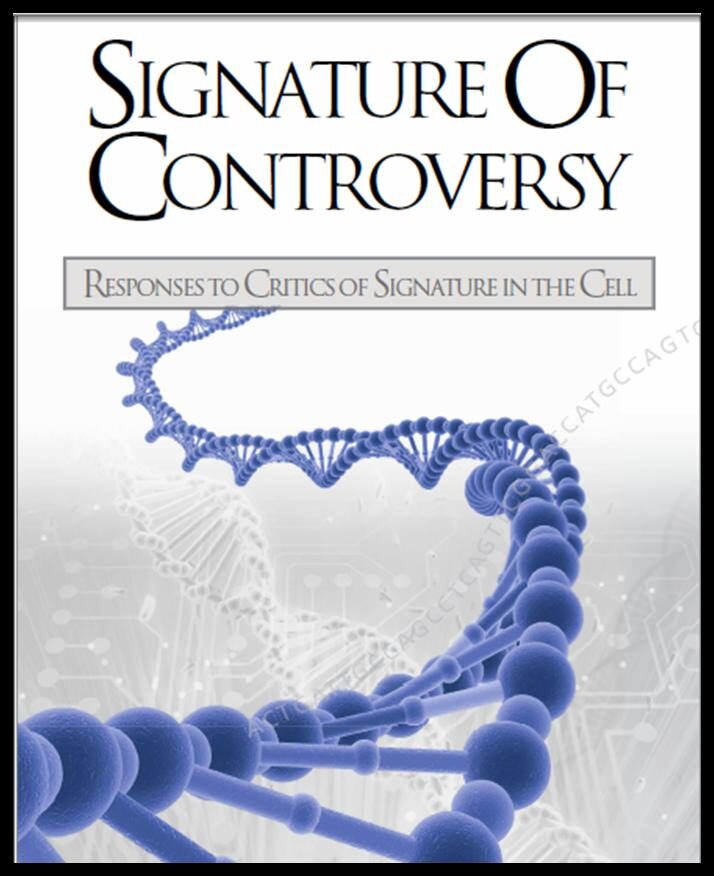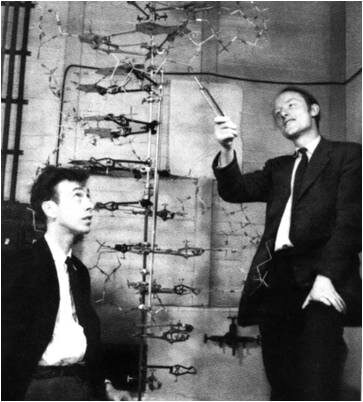Hereinafter I will provide a succinct summary of some of the contents of the proceedings which proceeded forth from the new—and free—ebook, Signature of Controversy – Responses to Critics of Signature in the Cell1 which is freely downloadable here.
Signature of Controversy is a compilation of articles that were written by David Berlinski, David Klinghoffer, Casey Luskin, Paul Nelson, Jay Richards, Richard Sternberg and Stephen Meyer as reviews of Stephen C. Meyer’s book Signature in the Cell were being published. Yet, what comes through, loudly and clearly, is that many of the reviews were not reviews but where emotional reactions based on faulty and prejudicial presuppositions mostly written by people who had not read Signature in the Cell. This point is emphasized again and again in Signature of Controversy as one after the other, its authors noted that the reviewers were not actually reviewing. Just as you get tired of having them note that so and so obviously did not read the book, keep in mind that the real problem is that so and so obviously did not read the book but still proceeded to write a review.
Indeed,
If the strength of an argument is reflected in the feebleness of the rebuttals it receives, then Stephen Meyer’s manifesto, Signature in the Cell: DNA and the Evidence for Intelligent Design, might be a rare rhetorical gem.
Here is some of Stephen Meyer’s background:
In 1985 I attended a conference that brought a fascinating problem in origin-of-life biology to my attention—the problem of explaining how the information necessary to produce the first living cell arose. At the time, I was working as a geophysicist doing digital signal processing, a form of information analysis and technology. A year later, I enrolled in graduate school at the University of Cambridge, where I eventually completed a PhD in the philosophy of science after doing interdisciplinary research on the scientific and methodological issues in origin-of-life biology. In the ensuing years, I continued to study the problem of the origin of life and have authored peer-reviewed and peer-edited scientific articles on the topic of biological origins, as well as co-authoring a peer-reviewed biology textbook.
Last year, after having researched the subject for more than two decades, I published Signature in the Cell, which provides an extensive evaluation of the principal competing theories of the origin of biological information and the related question of the origin of life.
In essence, the issue revolved around the following question and points:
Where did life come from? Charles Darwin himself did not seek to resolve that mystery but his modern followers believe the problem is well in hand, along Darwinian lines, offering a variety of purely materialist explanations for the origin of the biological information coded in DNA…
Despite its being written about in print and online by numerous friends and foes of intelligent-design theory, few—if any—of the critics really grappled with the substance of Meyer’s argument. This is remarkable and telling.
Count Richard Dawkins as one of the very many who simply refuse to not only grappled with the substance of Meyer’s argument but refuse to even consider what the substance might be and also refuse to debate him (see Will Richard Dawkins Debate Stephen Meyer?).

So what of the “few—if any”?
the horde of Signature-bashers who not only did not read the book but in most instances did not even take the trouble to inform themselves about its contents. These latter include even so eminent a biologist as Francisco Ayala of the University of California, Irvine… some of the most prominent attacks were precisely from scientists who did not read the book but felt entitled to comment anyway. This fact is important because it illustrates the difficulty faced by the intelligent-design community in seeking to get a fair hearing….
the aforementioned Francisco Ayala critiqued Signature in the Cell at length despite having virtually no idea what is in it. Let that sink in….
Ayala does not appear to have even made a search for the crib notes online…it appears that he did little more than glance at the title page and table of contents—if that. As a result, his review misrepresents the thesis and topic of the book.
Francisco Ayala argued that:
The human genome manifests nonsense sequences and sloppy editing ill-befitting of a deity or any truly intelligent designer, he argues. He also sees other aspects of the natural world that he thinks are inconsistent with the existence of a Deity. I’ll leave it to theologians to grapple with Ayala’s arguments about whether backaches in old age and other forms of generalized human suffering make the existence of God logically untenable.
David Klinghoffer “a former book review editor (at National Review)” notes:
unambiguously written to look like a review by biologist Francisco Ayala…actually gave every evidence that Ayala had not read the book. (My colleague Dr. Meyer thinks Ayala did read the Table of Contents, but on this I must disagree.)…the book, which he patently didn’t read…Ayala obviously hadn’t read the book, and, as a result, made some embarrassing mistakes that any reader of the book would recognize….his critique is clearly based on an almost complete ignorance of the book.
For example,
Ayala claims: “The keystone argument of Signature of the Cell is that chance, by itself, cannot account for the genetic information found in the genomes of organisms. I agree. And so does every evolutionary scientist, I presume.
This is clearly fallacious, as Signature in the Cell elucidates via quotations/citation. But “does every evolutionary scientist” “agree” that “chance, by itself, cannot account for the genetic information found in the genomes of organisms”? Well, that depends on whether you consider “chance” to be the same as “luck.” After all, Richard Dawkins relies upon luck to explain the origins of life and thereafter concocts Darwinian tall tales in order to make “chance” appear to not be “chance”—or more “luck.” Richard Dawkins wrote,
It is as though, in our theory of how we came to exist, we are allowed to postulate a certain ration of luck.2
Stephen Fletcher “told people to forgo reading SITC and instead just read Wikipedia” as there was “no evidence of Dr. Fletcher having read the book or any evidence of his comprehending the severity of the central problem facing chemical evolutionary theories of life’s origin.”
Stephen Fletcher…[was] associating Meyer’s argument with a belief in “gods, devils, pixies, fairies” and recommending that readers learn about chemical evolution by, instead, reading up on it elsewhere from an unimpeachable source of scientific knowledge:
Readers who wish to know more about this topic are strongly advised to keep their hard-earned cash in their pockets, forgo Meyer’s book, and simply read “RNA world” on Wikipedia…
Fletcher’s statement that “It is hard to imagine a worse book” suggests that he has read it. If he has, he knows that it includes a chapter on “The RNA World” which describes that hypothesis for the origin of DNA at least as fully as the Wikipedia article.
Note that there was one response by Stephen Meyer to Stephen Fletcher which the editors of the Times Literary Supplement did not publish.
Now, besides the recommended sloth of forgoing considering your opponent’s arguments as carefully laid out and, instead, resorting to Wikipedia note that the comment demonstrates a lack of knowledge of Natural Theology aka General Revelation. It does this by “associating Meyer’s argument with a belief in ‘gods, devils, pixies, fairies.’” Firstly, this not only misrepresents Stephen Meyer, it misrepresents Intelligent Design as there are Intelligent Design advocates who are Christians, certainly, but also Jews, Muslims, Hindus as well as atheists (such as Francis Crick) and agnostics (such as David Berlinski).

For an example as to why it is faulty to associate God—to which Meyers does not refer—or gods with devils, pixies and fairies and the issue of Natural Theology/General Revelation see On the Flying Spaghetti Monster, the Invisible Pink Unicorns, et al.
We now come to the fact that origin of life experiments always (to whatever degree they are successful) end up providing evidence for intelligent design:
As Nobel laureate Christian de Duve has noted, postulations of pre-biotic natural selection typically fail because they “need information which implies they have to presuppose what is to be explained in the first place.”
Third, the capacity for even partial replication of genetic information in RNA molecules results from the activity of chemists, that is, from the intelligence of the “ribozyme engineers” who design and select the features of these (partial) RNA replicators. These experiments not only demonstrate that even highly limited forms of RNA self-replication depend upon information-rich RNA molecules, they inadvertently lend additional support to the hypothesis that intelligent design is the only known cause by which functional information arises.
Indeed, highly educated and intelligent scientists intelligently design experiments employing equipment that was intelligently designed by highly educated and intelligent engineers and use prior knowledge and preexisting materials in seeking certain results.
The problem, ironically, is their [Matthew Powner, Beatrice Gerland and John Sutherland] own skillful intervention. To ensure a biologically relevant outcome, they had to intervene—repeatedly and intelligently—in their experiment: first, by selecting only the right-handed isomers of sugar that life requires; second, by purifying their reaction products at each step to prevent interfering cross-reactions; and third, by following a very precise procedure in which they carefully selected the reagents and choreographed the order in which they were introduced into the reaction series.
Thus, not only does this study not address the problem of getting nucleotide bases to arrange themselves into functionally specified sequences, but the extent to which it does succeed in producing biologically relevant chemical constituents of RNA actually illustrates the indispensable role of intelligence in generating such chemistry.
The scientists intervened into the process repeatedly and intelligently by acting as un-natural or supernatural selectors.
in [Tracey] Lincoln and [Gerald] Joyce’s experiment, a pre-synthesized specifically sequenced RNA molecule merely catalyzes the formation of a single chemical bond, thus fusing two other pre-synthesized partial RNA chains. Their version of “self-replication” amounts to nothing more than joining two sequence-specific pre-made halves together. More significantly, Lincoln and Joyce themselves intelligently arranged the base sequences in these RNA chains. They generated the functionally specific information that made even this limited form of replication possible.
Thus, as I argue in Signature in the Cell, Lincoln and Joyce’s experiment not only demonstrates that even limited capacity for RNA self-replication depends upon information-rich RNA molecules, it also lends additional support to the hypothesis that intelligent design is the only known means by which functional information arises….
Joyce intelligently arranged the matching base sequences in these RNA chains…Joyce’s experiments not only demonstrate that self-replication itself depends upon information-rich molecules, but they also confirm that intelligent design is the only known means by which information arises.
This sort of purposeful intelligent intervention has been going on all along; consider, for example, the example of Richard Dawkins and his biomorphs, he is The Wizard of Biomorph Land
